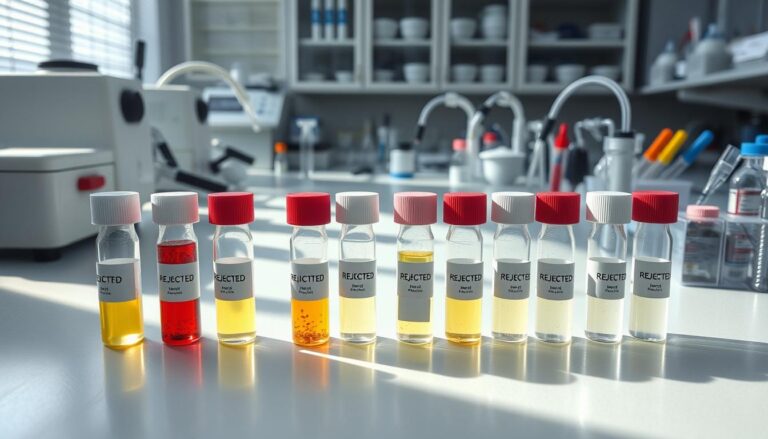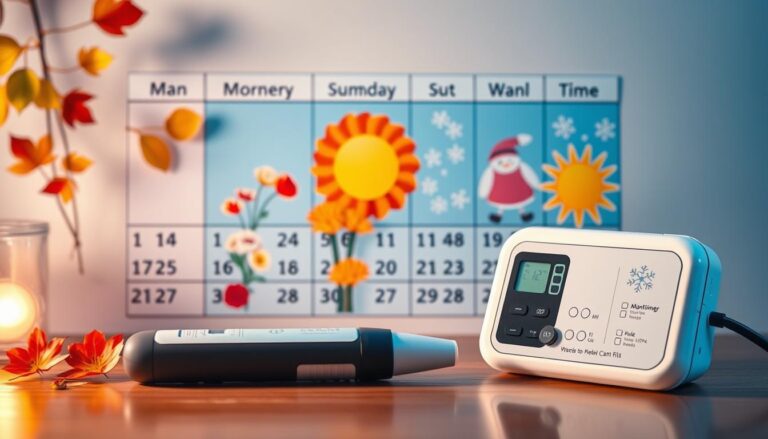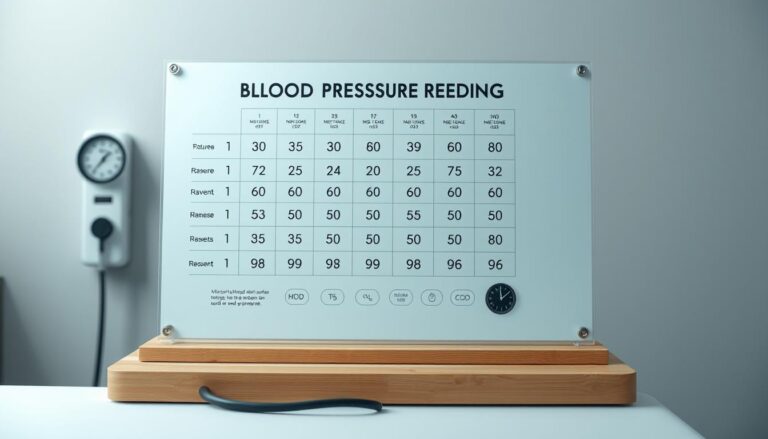Diabetes Prevention Screening: When and What to Test
Keeping good health is key, and a big question is: Are we doing enough to stop diabetes? With 13% of US adults over 18 having diabetes, and 34.5% at risk, screening is vital. We’ll look at why early detection matters and the tests available to help prevent diabetes.
There’s debate about screening for type 2 diabetes. But knowing about prediabetes and early diabetes is important. These stages are key to understanding why screening is so important. The risk of diabetes goes up with higher blood sugar levels and BMI, making regular checks essential.

Screening helps find people with prediabetes or type 2 diabetes early. This lets us help them prevent or manage the disease. The American Diabetes Association says everyone over 45 should be screened, showing how important it is for our health. By knowing about screening and the tests, we can protect our health and avoid diabetes complications.
Understanding the Importance of Diabetes Prevention Screening
Diabetes screening is key to keeping us healthy and avoiding diabetes problems. It helps find and treat diabetes early. This can greatly lower the risk of serious health issues and improve our well-being.
Knowing our risk for diabetes is vital. This is done through a diabetes risk assessment. It looks at things like our age, family history, and lifestyle.
- Early detection and treatment of diabetes
- Reduced risk of complications, such as heart disease and kidney damage
- Improved health outcomes and quality of life
By understanding the value of diabetes screening, we can take steps to prevent or delay diabetes. This helps avoid its serious complications.
Essential Diabetes Prevention Screening Methods
We use different tests to find diabetes early. These include the fasting plasma glucose test, oral glucose tolerance test, glycated hemoglobin test, and random blood sugar test. Each test has its own benefits and drawbacks.
These tests are key for preventing and managing diabetes. For example, the fasting plasma glucose test checks blood sugar after not eating for a night. The oral glucose tolerance test checks blood sugar after drinking a sweet drink.
The glycated hemoglobin test, or A1C test, shows average blood sugar levels over 2-3 months. The random blood sugar test checks blood sugar at any time. Knowing about these tests is important for preventing and managing diabetes.
Fasting Plasma Glucose Test (FPG)
This test is a common way to screen for diabetes. It checks blood sugar after not eating for a night.
Oral Glucose Tolerance Test (OGTT)
This test checks blood sugar after drinking a sweet drink. It’s often used to find gestational diabetes.
Glycated Hemoglobin (HbA1c) Test
This test shows average blood sugar levels over 2-3 months. It’s a good way to see how well blood sugar is controlled over time.
Random Blood Sugar Test
This test checks blood sugar at any time. It’s used to keep track of blood sugar in people with diabetes.
When to Schedule Your Diabetes Prevention Screening
Scheduling regular diabetes screenings is key for catching the disease early. To find out when you should get screened, look at your risk factors. These include high blood pressure, being in a high-risk racial group, and having heart disease.
The American Diabetes Association says how often you should get screened depends on your risk. For example, people over 45 should get screened every three years. If you have a family history of diabetes, you might need to go more often.
Risk Factors That Indicate Early Screening
- Family history of diabetes
- Overweight or obesity
- Hypertension
- High-risk race/ethnicity
- History of coronary vascular disease
Recommended Screening Intervals
The American Diabetes Association suggests these screening times:
| Age | Screening Interval |
|---|---|
| 45 and older | Every 3 years |
| With family history of diabetes | Every 3 years or more frequently |
Special Considerations for High-Risk Groups
People at high risk, like those with a family history or who are overweight, should get screened more often. Talk to your doctor to figure out the best screening schedule for you.
Conclusion: Taking Control of Your Diabetes Prevention Journey
Controlling your diabetes prevention journey is key to staying healthy and avoiding serious problems. By eating well and exercising regularly, and getting diabetes prevention screening often, you can fight diabetes. This helps you feel better overall.
Worldwide, about 537 million adults had diabetes in 2021. Experts think this number will hit 783 million by 2045. But, good news: changing your lifestyle can cut your risk of getting type 2 diabetes by up to 58%. Making these changes helps you take charge of your diabetes prevention journey and improve your health.
You’re not alone in this fight. There are many places to get help, like support groups and online forums. By starting with a diabetes prevention screening, you’re investing in your future health. With the right help and strategies, you can manage your diabetes and live a healthier life.







